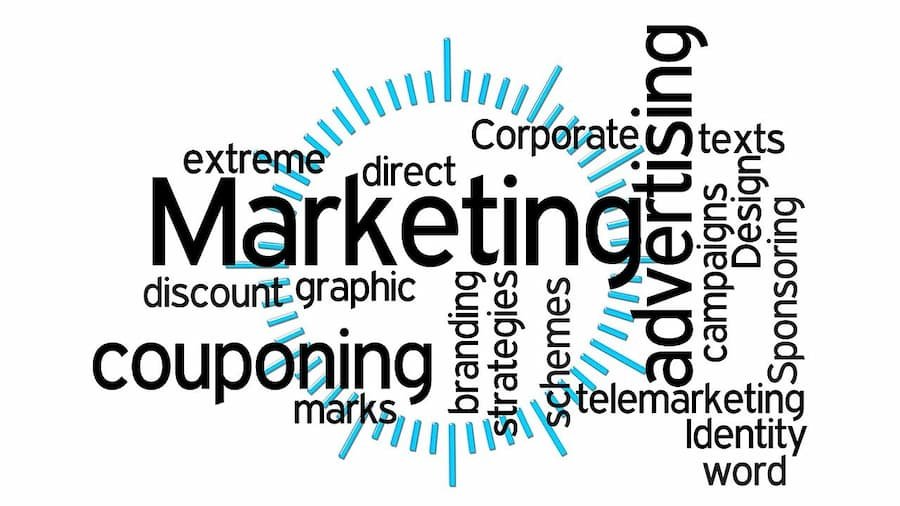Table of Contents
Introduction
Anyone who is thinking of starting a new business has heard of the words “marketing plan”. What does it mean? A functional marketing plan is a usable, comprehensive document that plays the role of a guide. This guide contains essential promotional strategies used by the company to create a market for the product or service they are selling.
A functional marketing plan also includes the various ways an organization can attain all its future goals, including revenues, capital investments, and profits. Functional marketing plans mainly comprise the different PR campaigns that will be undertaken by the company as part of this effort. These will be discussed in-depth, mostly in a formal report-like format, to help users of the functional marketing plan understand clearly.
Every business offers value to the customer. Normally, this value is represented by a number that is the cost of the product or service they are selling. A functional marketing plan is based on the value of the business to the customer. It is supposed to justify to the customer why they should choose this company’s product instead of another. A truly functional marketing plan describes the benefits of choosing the business over others. It targets the population that the company’s products and services are meant for.
Purpose Of A Functional Marketing Plan
The purpose of a functional marketing plan is to provide the organization with a helpful and effective course of action. This systematic plan serves the purpose of a guide and controls the advertising and marketing activities conducted by the company. The focus of a functional marketing plan highly depends on the overall mission and vision of the company. This is why each company must have a unique and customized functional marketing plan.
Elements Of A Solid Marketing Plan
The elements of a functional marketing plan are:

Market Research
This helps the company set prices for existing and new products. It also helps in understanding the demographics that are the target market for the company’s products.
Tailored Communication
Effective communication aims to target the demographic meant to consume the company’s products. There are various ways to reach out and find out what these consumers want. Tailoring your message that speaks to them personally and helps them relate is an important part of a functional marketing plan.
Choosing The Best Channels
Selecting the most efficient platforms to advertise the product or service sold by the company is essential. In today’s technology-driven world, there is a myriad of ways one can promote their company. There are digital options like the internet, social media, email, etc. More traditional marketing platforms include newspapers, magazines, radio, TV, etc. It is important for a company to find a fine balance between the two types of marketing platforms.
Analysis Of Results
Functional marketing plans should ideally have measurable results that can be compared and analyzed, as it is the only way to productively use them. There would be no purpose in conducting any marketing activities if we weren’t able to measure, compare, and analyze. This analysis will, in turn, help in production and other essential areas of business. One of the ways to do this is by building a detailed profit and loss statement using this template for Google and Excel sheets.
How To Write A Functional Marketing Plan

Planning is essentially putting down practical goals for the future and identifying ways to attain them. Every good marketing plan is rooted in measurable and comparable data that helps the company to improve its business.
A marketing plan created for a company is detailed and strategic in nature. It is usually drafted for a fixed period of time, like five or ten years, and is highly organized. Different campaigns in a marketing plan are described in detail with specific information on the mission, user profiles, budgeting, and other important areas. The primary intention of a functional marketing plan is to find out what works and what doesn’t for the company. Keeping all this in mind, here is how you can write a functional marketing plan.
Write An Executive Plan
The very first step of a functional marketing plan is to write a short and impactful summary that provides the readers with company goals, achievements, plans for the future, and other information about the company. It is basically the first, incomplete draft of your marketing plan. An executive summary includes brand information, metric systems followed by the company, important milestones, goals, and plans for the future, and more. Usually, this summary is brief and effective.
The company intends to give readers one-glance information about itself without boring them too much. There are a few specific facts on numbers in this section of the functional marketing plan. A good executive summary gives the reader a vague idea of the company’s current condition without getting into the specifics. It also aims to give shareholders some motivation to be a part of the company at the very beginning. You can also state the mission of the company in your executive summary.
Outline Your Marketing Goals
One of the most important parts of a functional marketing plan is the outlined marketing goals. Here’s where the marketing plan starts to get very specific. All information in this section can be measured, compared, and analyzed when put together. These goals talk about actual, quantifiable goals that can be achieved during the time period of the functional marketing plan. The company aims to get actual results, like customers, revenues, and web traffic using the plan. This is why the marketing goals established by the company must be as clear as possible.

The company can talk about areas like customer acquisition, KPIs, customer retention, targeted potential clients, profit predictions, new product entries, growth in social media following, growth in sales during the festive season, competitors’ prices, and more. The more specific a company’s marketing goals are, the easier it gets to achieve them. If you run a paper writing business that students can buy essays from, your marketing goals would include communicating to your users what you sell. Writing assignment papers, academic papers, and more would be your primary area of work. Informing students on a platform that they use a lot like Instagram is ideal for this purpose. Understanding and following this is key to creating a functional marketing plan.
Focus On User Personas
A user persona can be defined as a character created based on your current and potential customers to help you grow your business. How does a semi-fictional character help a company grow its business? Well, understanding one’s customers are essential to conducting business. Putting together customer personas from the beginning helps marketers in creating a profitable venture. One must know what kind of people they are selling their products or services to. A well-made user persona helps with this. You now have an insider idea of who your customer is which will help you customize your product according to their needs and sell it to them. Focusing on developing user personas and using them throughout the journey of the business is very important for an organization.
One can gather information for a user persona by interviewing customers and getting feedback from them – this is crucial for your functional marketing campaign. There are also many other ways, like telephonic conversations, surveying, conducting focus groups, following social media commentary, researching competitors, and more. What you need to know is if the customer likes your product as it is currently, and if they want any improvements or changes to be made to it. Another great way of finding out information about your customers is to smartly identify gaps in the market and create solutions that no one else has thought of. This will make your company stand out among a sea of others in the same industry. Identify traits and necessities of the demographic you serve to create a functional marketing plan that benefits them and you.
Do Some Competitor Research
Another important step of writing a functional marketing plan is conducting detailed and thorough competitor research. The main ways of doing this are to access secondary research collected by someone else or do primary research by reaching out to the competitor directly. this part of creating a functional marketing plan will help you understand the work other companies in the industry are doing.

This gives you an idea of what you should be doing to stand out. if your company is a startup, you may also want to do competitive research to get some inside industry info on how to make your business grow. Some important areas in this section include research into marketing, social media, and sales strategy, their finances including yearly growth in revenues and profits, their customer base and personas, and more. Understanding your strengths and weaknesses will give you an upper hand and help you to eventually take over the industry.
Set Accurate Baselines
A baseline is something that will give you an idea of the current standing of your company before you can create a functional marketing plan. Only if you know where your business stands right now, you will be able to plan for the future effectively and contribute to its growth. Defining baselines will help you in setting realistic goals and measure your growth comparably. Data is very important for this, which is why you need to collect information in a quantifiable format that you can measure and analyze. You can use infographics, visual charts, data entries, and various other methods of calculating baselines for this purpose.
Create A Marketing Strategy
While most of a functional marketing plan revolves around current customers of the company, a marketing strategy delves into the particulars of how a business intends to reach new demographics and turn them into customers. A marketing strategy outlines the key areas in the company’s marketing plan like content strategy, SEO, social media marketing, and advertising. Once it does this, it defines different strength points within the overall areas and guides users in attaining those specific goals effectively.
You can use comprehensive flow charts, diagrams, mind maps, roadmaps, or other methods to communicate your marketing strategy. The aim of creating a marketing strategy is to transparently describe all the different elements of the functional marketing plan in layman’s terms. This means that your marketing strategy must be easy to understand for anyone looking at it. It must be simple yet comprehensive.
Describe Your Marketing Initiative
After creating an elaborate marketing strategy, it is time to describe the specific initiatives and campaigns that will be conducted by the company for marketing purposes. These campaigns must align with the general vision and branding missions of the organization. Whether you are starting a bakery or an animal clinic, the way you decide to promote your business will matter a lot. It will directly contribute to the way your customers and potential clients see you and, accordingly, help you carve a niche in the market. In the content strategy, you will lay out the diverse types of content you will be created for promotional purposes.
You can also define the quantity of it. Another important aspect of writing an initial plan is to understand the different channels and mediums used by you for this. if you have a quirky and modern company that wants to appeal to younger crowds, using the internet for content creation and advertising is the best option. On the other hand, if you are an old-school business and are selling something that caters to the needs of an older generation, you may want to stick to platforms like newspapers and radio that are regularly consumed by them. You can also list and define any paid advertising campaigns in this section if there are any.
Define KPIs And Establish Tracking Guidelines
The final part of writing a functional marketing plan is to define key performance indicators and establish ways to track the marketing activities conducted. As mentioned above, everything done as part of marketing should be in a quantifiable manner. This means that you should be able to measure, compare, analyze, and use in any way required. Key performance indicators can be described as a quantifiable way of observing company performance over a fixed period of time for a specific purpose. Understanding and defining KPIs will help you identify and track business growth, which will, in turn, help you maximize profits. This is the last step and the main purpose of any marketing plan. Being able to define KPIs effectively means that you have created a full-working, functional marketing plan.
Conclusion
A marketing plan is the systematic plan of action used by a business to sell its product or service. It will give the organization an idea of who its target market, competitors, and other direct and indirect shareholders are. Without a solid marketing plan, a company fails to achieve its organizational goals and will have to close down very soon. This is why it is very important to develop and maintain a functional marketing plan.
Read also: Custom Website Development – Is This the Best Approach for Your Brand?

